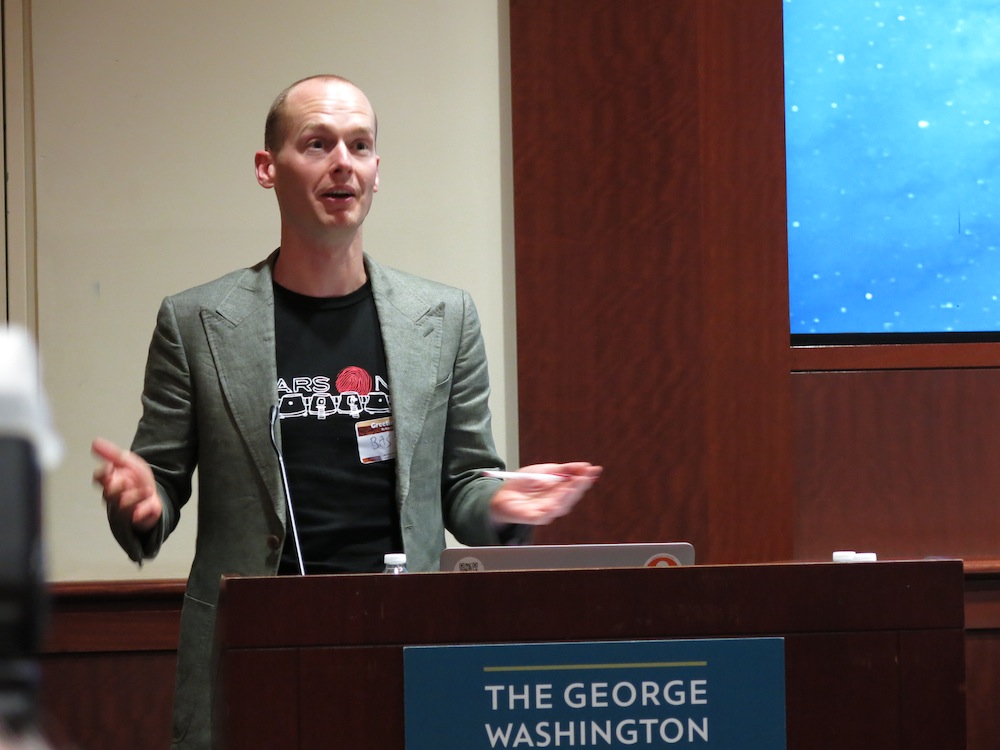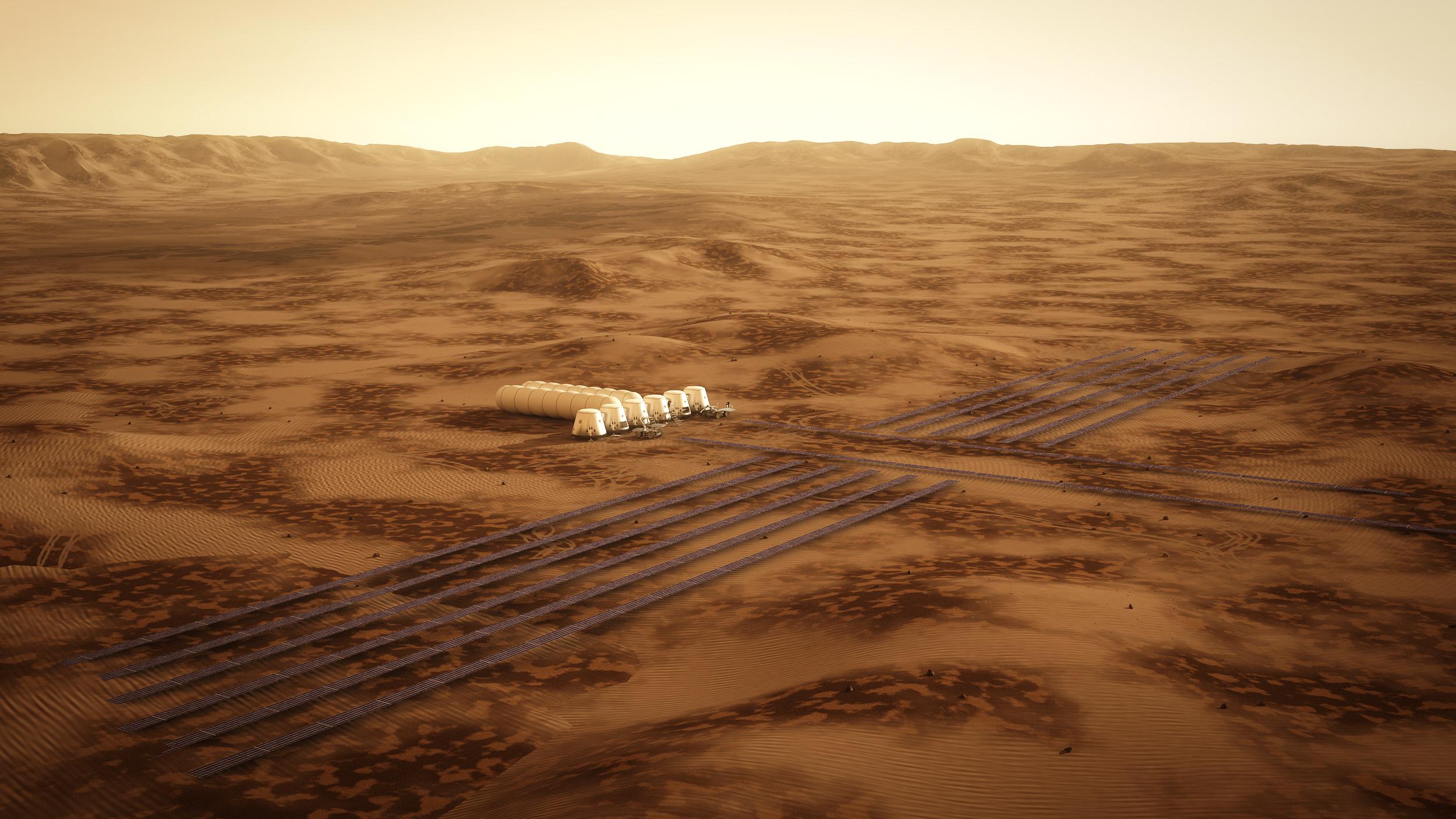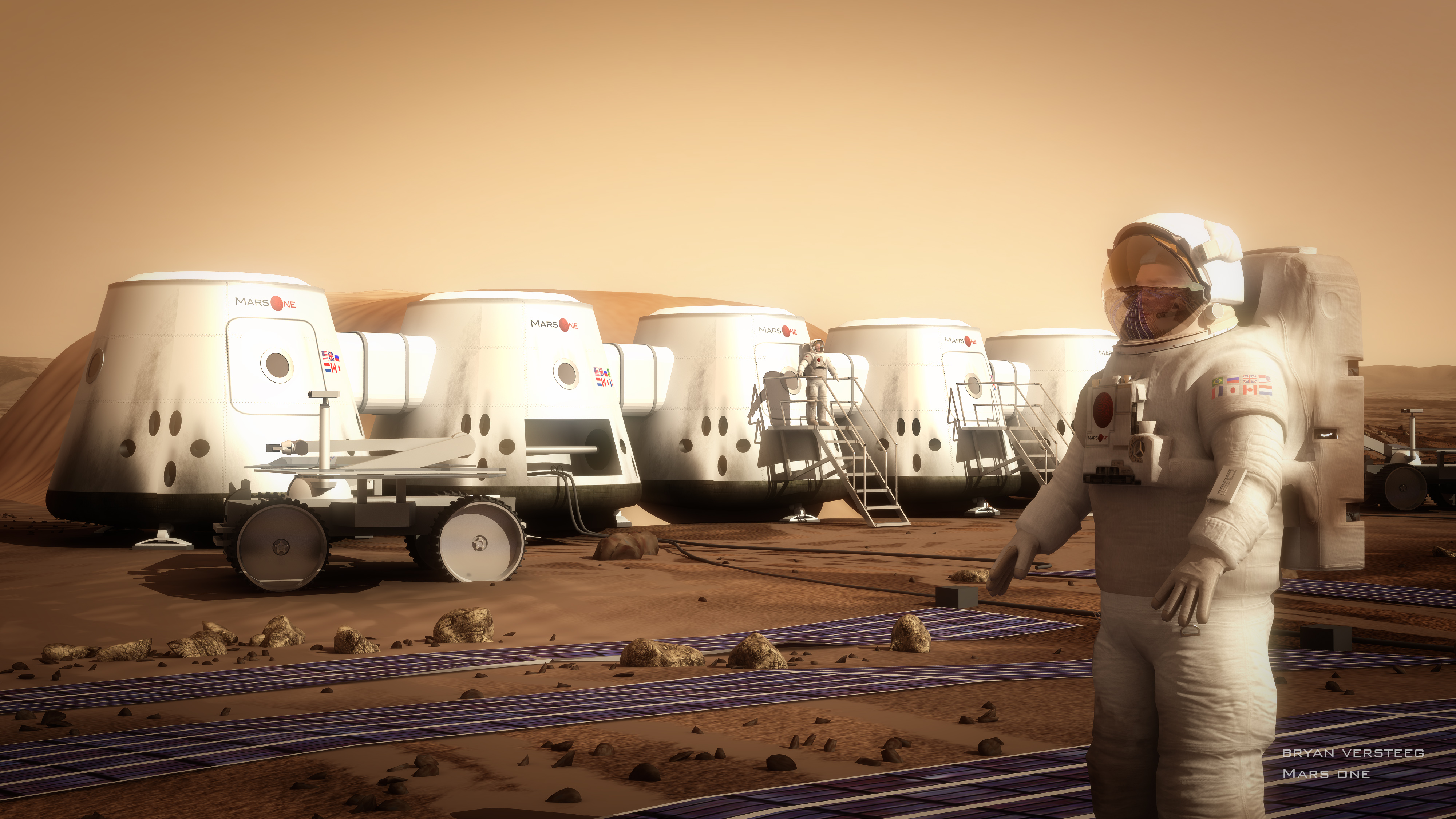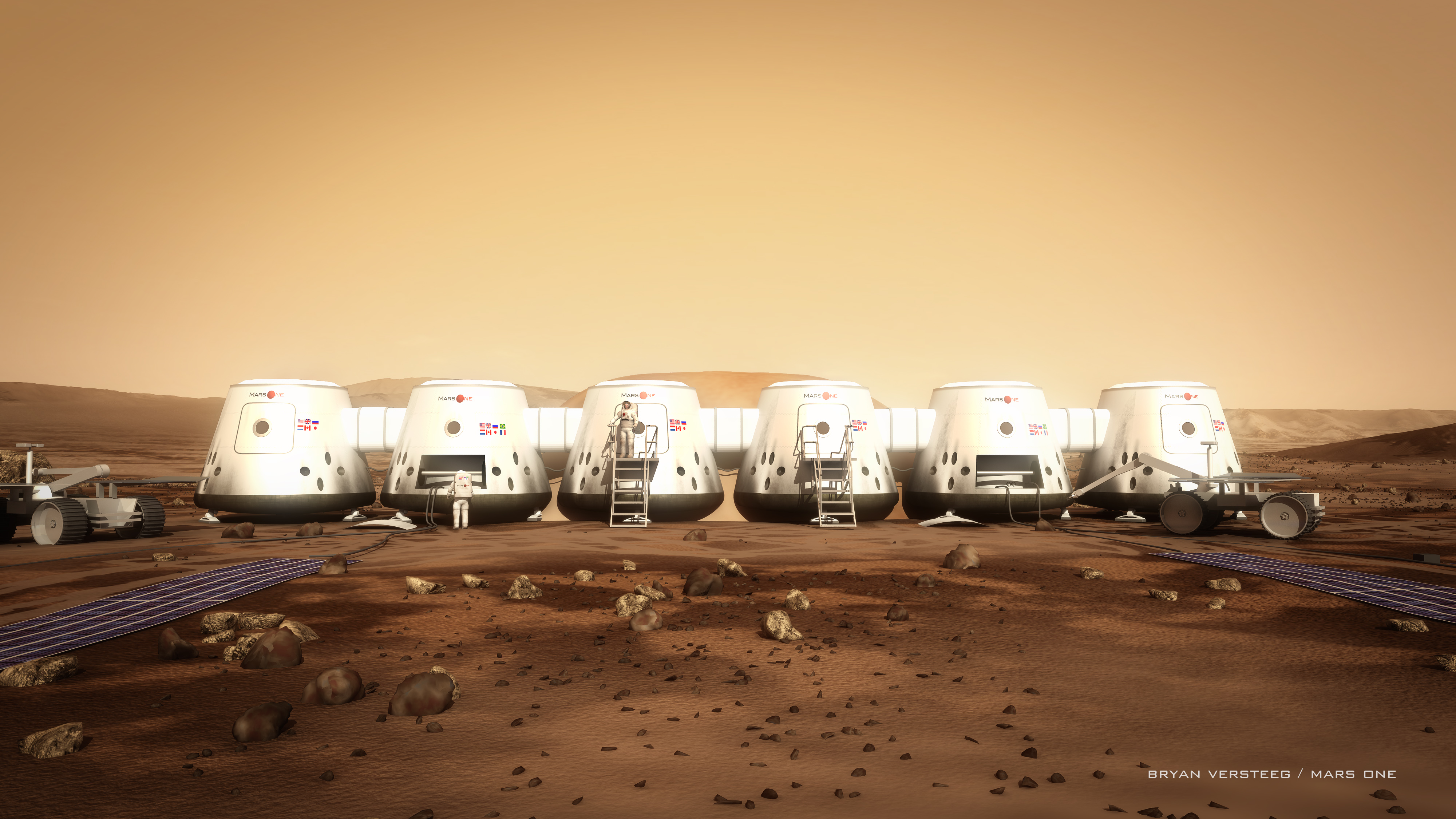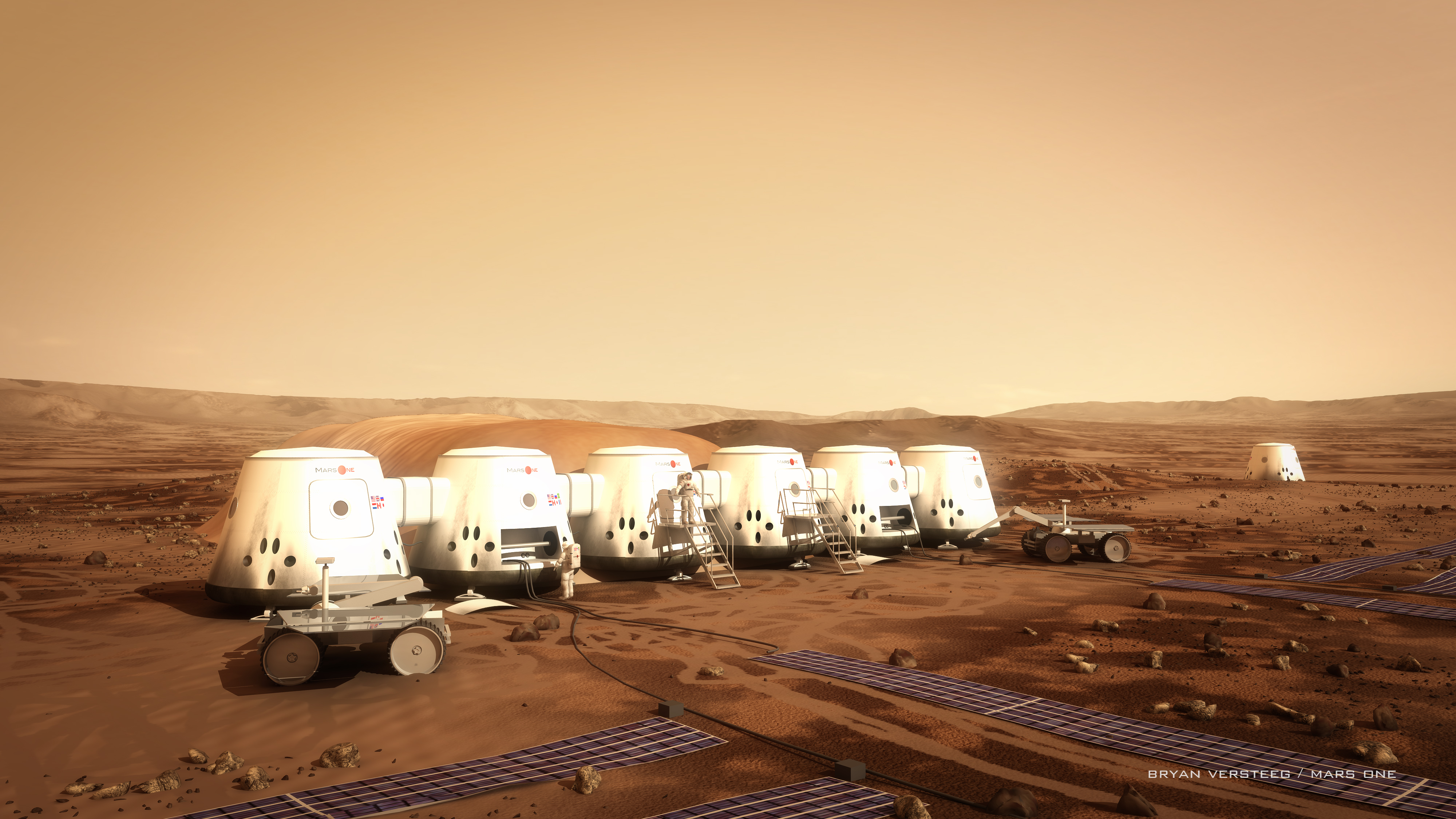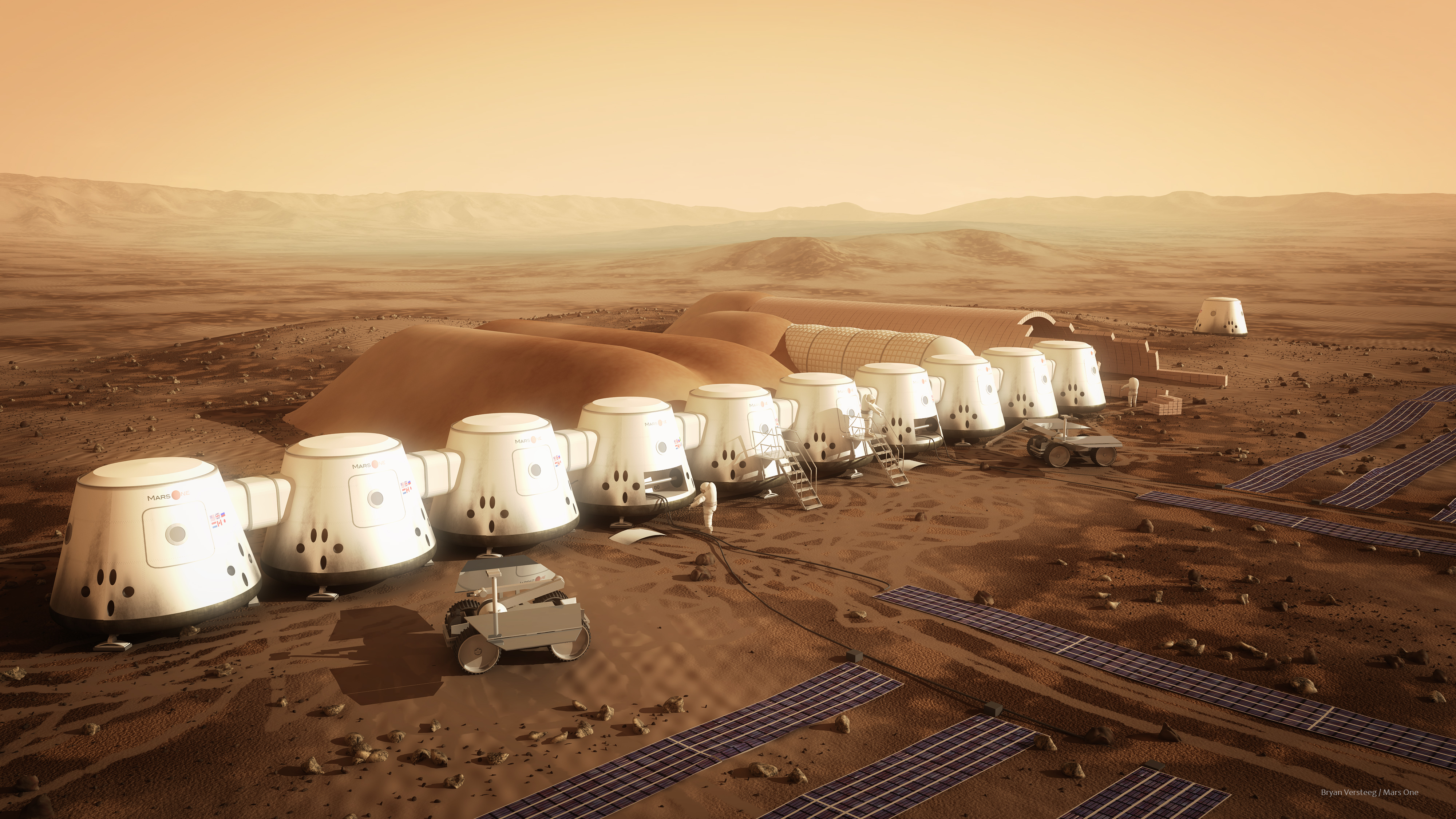Mars One's Red Planet Colony Project (Gallery)
Mars One CEO Bas Lansdorp in Washington, D.C.
Mars One co-founder Bas Lansdorp addresses the Million Martian Meeting in Washington, D.C. on Aug. 3, 2013 to discuss plans for a Mars colony mission in 2023.
Mars One Habitat Interior
Interior view of a possible habitat on Mars by the Mars One project.
Mars One Habitat
Interior view of a possible habitat on Mars for the Mars One project.
Mars One Habitats
Mars One is a not-for-profit organization that will establish a human settlement on Mars through the integration of existing, readily available technologies from the private space industry.
Mars One Logo
The Mars One logo.
Mars One Colony - 2021
Mars One plans to launch an unmanned supply mission in January 2016. It will land that October with more than 5,000 pounds of food or other supplies.
Astronauts and Mars One Colony
Artist's concept of Mars One astronauts and their habitat on the Red Planet. The nonprofit Mars One announced on Aug. 5, 2014 that it's starting a program called "Mars Exchange" to answer questions and spur dialogue about its ambitions colonization plans.
Breaking space news, the latest updates on rocket launches, skywatching events and more!
Artist's Depiction of Astronauts and Mars One Colony
Mars One will fund this decade-long endeavor by involving the whole world as the audience of a televised broadcast of every aspect of this mission: from the astronaut selections, their eight-year training on a Mars-like mock-up on Earth to their arrival on Mars in 2023 and their lives on the Red Planet.
View of Astronauts and Mars One Colony
All components of Mars One's settlement are slated to reach their destination by 2021. The hardware includes two living units, two life-support units, a second supply unit and two rovers.

Michael Wall is a Senior Space Writer with Space.com and joined the team in 2010. He primarily covers exoplanets, spaceflight and military space, but has been known to dabble in the space art beat. His book about the search for alien life, "Out There," was published on Nov. 13, 2018. Before becoming a science writer, Michael worked as a herpetologist and wildlife biologist. He has a Ph.D. in evolutionary biology from the University of Sydney, Australia, a bachelor's degree from the University of Arizona, and a graduate certificate in science writing from the University of California, Santa Cruz. To find out what his latest project is, you can follow Michael on Twitter.
